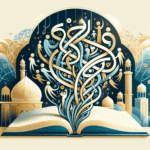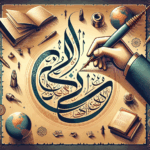Arabic Alphabet Lore: Cultural Stories Behind the Letters
The Arabic alphabet is not just a series of symbols used for writing; it’s a tapestry woven with centuries of history, culture, and stories. Each letter holds its own charm and significance, often linked to legends and traditions that have traveled through time. Let’s dive into the fascinating lore surrounding the Arabic alphabet and uncover the cultural stories behind these intriguing letters.
Table of Contents
1. Introduction to the Arabic Alphabet
2. The Birth of the Arabic Script 🐣
3. Cultural Significance of the Letters 🌍
4. The Story of the Letter ‚Alif‘ 🖋️
5. The Mystique of the Letter ‚Lam‘ ✨
6. Conclusion: Letters as Cultural Bridges 🌉
7. FAQs: Your Questions Answered
Introduction to the Arabic Alphabet
Did you know that the Arabic alphabet consists of 28 letters and is written from right to left? This script is not only used for the Arabic language but is also adapted for several other languages like Persian, Urdu, and Pashto. It’s both functional and aesthetically pleasing, making it a subject of intrigue for linguists and art lovers alike.
The Birth of the Arabic Script 🐣
The origins of the Arabic script are as fascinating as the letters themselves. Emerging in the 4th century through the Nabataean script, it evolved to suit the phonetic needs of the Arabic language. Over time, it developed into the script used today, with letters that beautifully connect in cursive form, enhancing the fluidity of written Arabic.
Cultural Significance of the Letters 🌍
Each letter of the Arabic alphabet carries its own cultural weight and stories that reflect the values and beliefs of the Arab world. From ancient poetry to modern calligraphy, these letters have been celebrated for their beauty and symbolism, often believed to hold mystical powers and secrets.
The Story of the Letter ‚Alif‘ 🖋️
The letter ‚Alif‘ is the first letter of the Arabic alphabet and often symbolizes unity and strength. In many cultural tales, it’s depicted as a leader among letters, standing tall and proud. ‚Alif‘ is also associated with the number one, representing the oneness of God in Islamic theology, making it a spiritual symbol in many contexts.
The Mystique of the Letter ‚Lam‘ ✨
‚Lam‘ is a letter wrapped in mystery and elegance. In calligraphy, it often forms graceful loops and curves, representing flexibility and grace. In folklore, ‚Lam‘ is sometimes seen as a bridge connecting different ideas or people, symbolizing communication and understanding. Its unique shape and sound have made it a favorite in artistic expressions.
Conclusion: Letters as Cultural Bridges 🌉
The Arabic alphabet is more than just a writing system; it’s a cultural bridge that connects people across different regions and eras. By exploring the stories and significance of these letters, we gain a deeper appreciation for the rich cultural heritage they embody. Whether you’re a language enthusiast or a curious traveler, the lore behind the Arabic alphabet offers a captivating journey into the heart of Arab culture.
FAQs: Your Questions Answered
Q1: How many letters are in the Arabic alphabet?
A: The Arabic alphabet consists of 28 letters.
Q2: Is the Arabic alphabet used in other languages?
A: Yes, it’s adapted for several languages, including Persian, Urdu, and Pashto.
Q3: Why is the Arabic script written from right to left?
A: This direction follows ancient writing traditions and has been maintained due to historical and cultural reasons.
Q4: What is the significance of calligraphy in Arabic culture?
A: Arabic calligraphy is highly revered as an art form, often used to express religious texts and cultural values beautifully.
Q5: Can learning about the Arabic alphabet enhance cultural understanding?
A: Absolutely! Understanding the Arabic alphabet and its stories can provide insights into Arab culture, history, and values.





